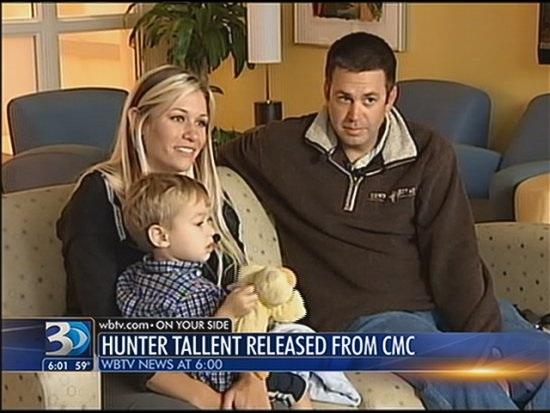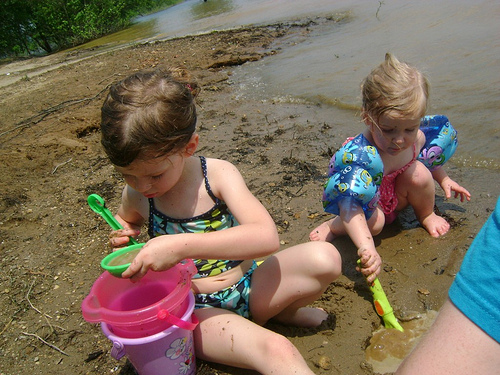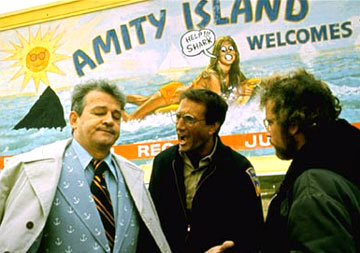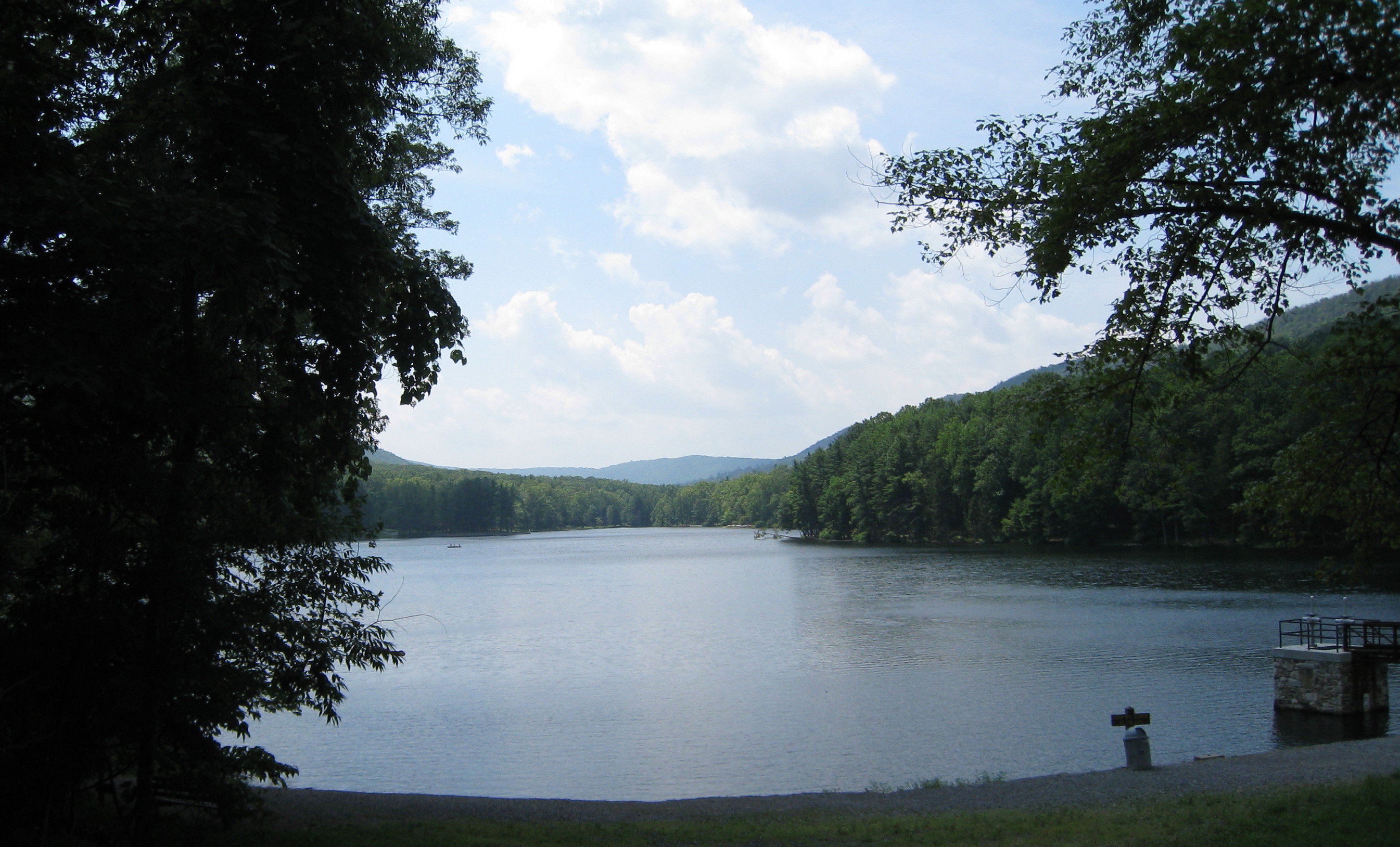In Aug. 2011, Terry Brady, a spokesperson with Pennsylvania’s Department of Conservation and Natural Resources said that the lake at Cowans Gap State Park remained open, despite links to three cases of E. coli O157. “The beaches are open and actually there was a good turnout today. A link to the park has not been established."
The lake was closed the next day. Eighteen people, primarily kids, were identified with E. coli O157:H7; 10 were hospitalized. An additional 24 people were classified as suspected cases.
Swimming can be risky.
The Pennsylvania Department of Health has issued a report Cowan’s Gap E. coli outbreak. Excerpts below:
On Wednesday, Aug. 3, 2011, the Pennsylvania Department of Health (DOH) was notified by an infection preventionist at a local hospital of two children with HUS who had both reported recent .jpg) visits to the same Pennsylvania State Park. One of these patients also tested positive for E. coli O157:H7. By Friday, Aug. 5, there were additional reports of E. coli in persons with exposure to the state park and its beach area.
visits to the same Pennsylvania State Park. One of these patients also tested positive for E. coli O157:H7. By Friday, Aug. 5, there were additional reports of E. coli in persons with exposure to the state park and its beach area.
After initial notification, the Department of Health contacted the Bureau of State Parks in the Department of Conservation and Natural Resources (DCNR). Several hypotheses were initially posed as explanations for this E. coli cluster: coincidence (this is a large lake with many swimmers each year), consumption of contaminated food or water at a nearby establishment, consumption of contaminated food or water from the park, or swimming in the park lake.
Information was gathered about previous inspections of the concession stand, water-testing results from the beach area, and other significant events at the lake.
On the recommendation of DOH, at 5:30 p.m. on Tuesday, Aug. 9, DCNR closed the lake to all water activities, including swimming, boating and fishing. On Aug. 10, DOH conducted a site visit to the park along with DCNR and DEP (Department of Environmental Protection) to view the beach, camping sites, dumping stations and other potential opportunities for contamination of water. Small samples were collected from the beach water and sediment and sent to the DOH Bureau of Laboratories for testing. DEP also sent red dye through the sewer system to check for leaks into the lake. On Aug. 11, 100 liters of water were passed through a large-volume filtration system and sent to CDC as an additional attempt to detect organisms.
Eighteen confirmed and probable cases were identified throughout the course of the investigation. Thirteen of these cases were confirmed through a diagnosis of HUS and/or lab-identification of E. coli O157:H7. Ten of the 13 confirmed cases were hospitalized, and one was known to be a secondary case, exposed to another confirmed case but not the lake itself. The majority of the cases (61 percent) were 10 years old or younger. Many of the cases were exposed between July 30 and Aug. 1, although many went to the park and swam on multiple days.
Additionally, 24 persons were classified as suspect cases because they had reported GI symptoms and exposure to the lake; no additional data was available to classify these cases further. All 11 culture-positive cases had matching PFGE patterns with an uncommon two-enzyme combination that had not been seen nationally since December 2010.
The lake had a shallow swimming area along the beach, delineated by buoys. There were recently built, functioning shower and rest-room facilities adjacent to the concession stand, both easily accessible to beach users. There was an on-site water treatment plant down-stream from the lake and no critical deficiencies were found. The red dye which was placed in the sewer system was not subsequently observed in the lake, indicating there were no leaks from the sewer system into the lake water. All water and sediment samples tested failed to grow E. coli O157:H7.
While the lake water did not test positive for E. coli O157:H7, the epidemiology clearly indicates the lake as the source of transmission. The lake was the only common factor among all of the cases, and 100 percent of the primary cases reported swimming in the lake. The vast majority of .jpg) the cases in this outbreak were children. The original source of contamination of the lake was unable to be determined, though it is likely from a person who was swimming while ill.
the cases in this outbreak were children. The original source of contamination of the lake was unable to be determined, though it is likely from a person who was swimming while ill.
(why? what evidence? thought the origin was unable to be determined?)
The predominance of children is typical for outbreaks of E.coli O157:H7. The shallow, warm water of this beach makes it a popular site for children; children interact with recreational water very differently than adults and are more likely to accidentally swallow water. Children are also more likely to shed the bacteria after symptoms have resolved, putting other children at risk while playing together in the water or while interacting in other settings. This is particularly a problem with diapered children.
Public health messages about healthy swimming need to continue to be communicated, particularly at places with lots of children. The public needs to be reminded not to swim, or allow their children to swim, when they are experiencing diarrhea. Parents should try to keep their children from swallowing swimming water as much as possible. Finally, practicing good hygiene before and after swimming will help prevent contamination of water.
 More than half of those who got ill were children between 4–10 years old. Experts believe the outbreak began after a swimmer infected with norovirus had diarrhea or vomited in the water and other swimmers swallowed the contaminated water. To prevent other people from getting sick, park officials closed the lake to swimmers for 10 days.
More than half of those who got ill were children between 4–10 years old. Experts believe the outbreak began after a swimmer infected with norovirus had diarrhea or vomited in the water and other swimmers swallowed the contaminated water. To prevent other people from getting sick, park officials closed the lake to swimmers for 10 days.
(1).jpg) were hospitalized. An additional 24 people were classified as suspected cases.
were hospitalized. An additional 24 people were classified as suspected cases..jpg) visits to the same Pennsylvania State Park. One of these patients also tested positive for E. coli O157:H7. By Friday, Aug. 5, there were additional reports of E. coli in persons with exposure to the state park and its beach area.
visits to the same Pennsylvania State Park. One of these patients also tested positive for E. coli O157:H7. By Friday, Aug. 5, there were additional reports of E. coli in persons with exposure to the state park and its beach area..jpg) the cases in this outbreak were children. The original source of contamination of the lake was unable to be determined, though it is likely from a person who was swimming while ill.
the cases in this outbreak were children. The original source of contamination of the lake was unable to be determined, though it is likely from a person who was swimming while ill.  Cole Creek Arena in Casar.
Cole Creek Arena in Casar..jpg) week, but swimming continues to be prohibited.
week, but swimming continues to be prohibited..jpg) sick since mid July.
sick since mid July..jpg) from Huntingdon County. There are also two Maryland residents who got sick after visiting the park.
from Huntingdon County. There are also two Maryland residents who got sick after visiting the park.  mission
mission are open and actually there was a good turnout today. A link to the park has not been established."
are open and actually there was a good turnout today. A link to the park has not been established." 6-year-old girl, a 15-month-old boy and several children who apparently suffered "mild symptoms" but did not require hospitalization.
6-year-old girl, a 15-month-old boy and several children who apparently suffered "mild symptoms" but did not require hospitalization.